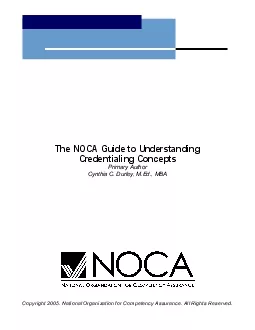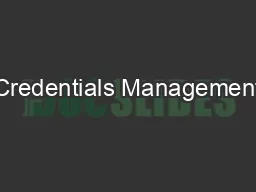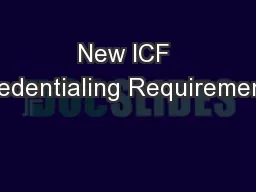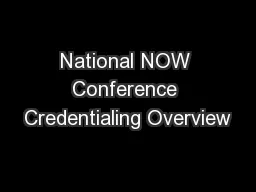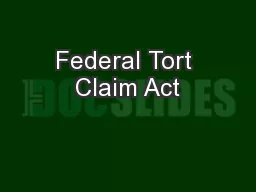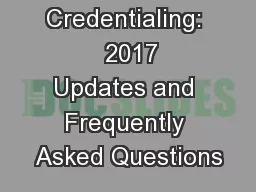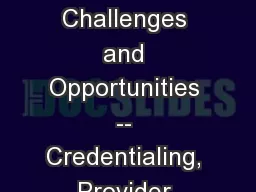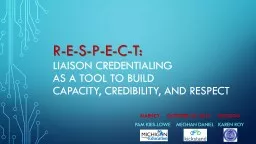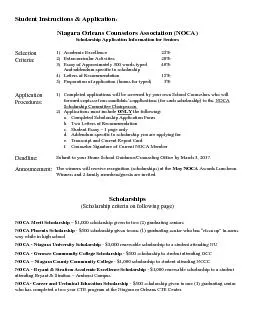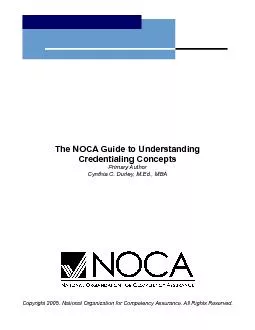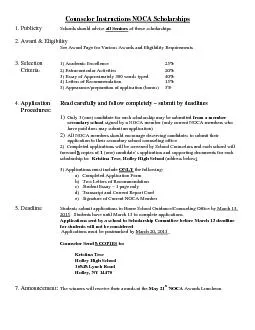PDF-The NOCA Guide to Understanding Credentialing Concepts
Author : carny | Published Date : 2021-08-27
3 Nearly every profession uses credentialing to establish criteria for fairness quality competence andor safety for professional services products or educational
Presentation Embed Code
Download Presentation
Download Presentation The PPT/PDF document "The NOCA Guide to Understanding Credenti..." is the property of its rightful owner. Permission is granted to download and print the materials on this website for personal, non-commercial use only, and to display it on your personal computer provided you do not modify the materials and that you retain all copyright notices contained in the materials. By downloading content from our website, you accept the terms of this agreement.
The NOCA Guide to Understanding Credentialing Concepts: Transcript
Download Rules Of Document
"The NOCA Guide to Understanding Credentialing Concepts"The content belongs to its owner. You may download and print it for personal use, without modification, and keep all copyright notices. By downloading, you agree to these terms.
Related Documents

